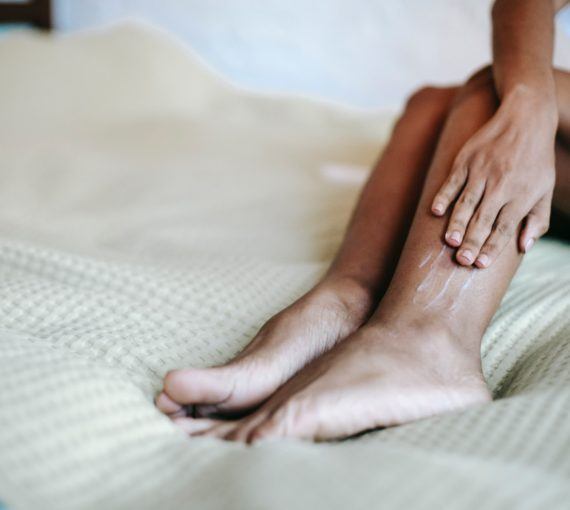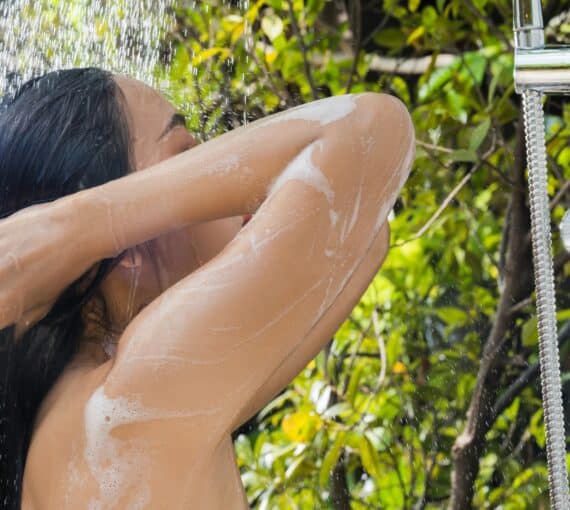
Caring for your nails doesn’t have to harm the planet. Adopt Earth-friendly hand and foot care practices! (Photo: Ketut Subiyanto via Pexels)
Hands and feet endure a lot. Yet, products we use to care for them often contain ingredients harmful to our health and the planet’s. Fear not. Your self-care practices can express your commitment to environmental and physical wellbeing.
Take care of your hands, feet, nails and the environment by ditching toxic chemicals.
Five non-toxic hand and foot care alternatives
Many conventional personal care products contain synthetic chemicals like parabens, phthalates and artificial fragrances. These can disrupt hormones, trigger allergies and pollute waterways and ecosystems.
Opt for non-toxic and environmentally-friendly alternatives. Try these five:
1. Choose oils and butters without synthetic additives
Instead of moisturizers containing synthetic additives, use oils such as coconut or jojoba. Both are rich in vitamins and fatty acids that nourish skin. Coconut oil is antibacterial and antifungal — ideal for cracked heels or dry cuticles.
Shea and cocoa butters are particularly effective for hydration and locking in moisture.
Tip! Research sourcing and production practices of the brands you buy to ensure they’re sustainable.
2. DIY exfoliators
An exfoliating scrub can be a treat for hands and feet, especially after a long day.
Craft your own using simple, biodegradable ingredients like:
- Sea salt. The coarse crystals are great for sloughing off dead skin and boosting circulation.
- Sugar. The granules are softer and dissolve more easily than salt. A great choice for sensitive skin.
- Ground steel cut or whole oats. Oats have long been revered for their soothing, anti-inflammatory and antioxidant properties. Great for soothing hands and feet (especially in cooler, drier seasons).
- Coffee grounds. Coffee particles are excellent at removing dead skin cells and increasing circulation (also a great way to make the most out of your food scraps!).
Create a scrub that’s effective and kind to your skin. Mix your choice of a base with a few tablespoons of organic honey, coconut oil or olive oil.
3. Soaks
You don’t need special products to enjoy a soothing foot soak. You can probably make one right now with what you have in your pantry!
Use simple ingredients:
- Epsom salts. Best known for easing muscle tension and reducing inflammation due to magnesium content.
- Essential oils. Many, such as lavender or tea tree, provide aromatherapy benefits and have antiseptic properties. (Try a peppermint foot soak!)
- Herbs. Fresh mint, chamomile and rosemary are ideal for a foot soak (and a great use of food scraps). Put herbs into a muslin bag to make cleanup easier.
Tip! There are dozens of online DIY foot soak recipes from dermatologists and podiatrists.
4. Choose green and clean lotions, balms and/or creams
Read ingredients. Look for reputable ecolabels that specify the product is free of toxic chemicals and additives.
5. Use eco-friendly tools
Avoid disposable, single-use items that contribute to unnecessary waste.
Choose reusable tools made from durable, recycled and/or sustainably harvested materials:
- Cuticle pusher. Choose stainless steel. It’s rust-resistant, reusable and more durable than plastic.
- Foot files. Instead of removing dead skin with a plastic and metal tool, use a pumice stone. It’s gentler on your skin and will last a long time.
- Nail files. Choose durable, long-lasting materials like glass, metal or sandstone.
- Nail clippers. Avoid those with plastic or rubber handles. Use those that are all stainless steel.

The ABCs of avoiding toxic chemicals
The world is full of invisible threats: industrial byproducts, synthetic additives and other toxic pollutants. We inhale, ingest and absorb them through our skin daily. This is called “body burden.” Learning how to avoid these toxic chemicals can be as easy as A, B, C.
How to keep your manicure stylish and sustainable
A manicure (or pedicure) is a fun and creative way to express yourself. Be mindful of potential health risks (to you and beauty care workers) and environmental impacts.
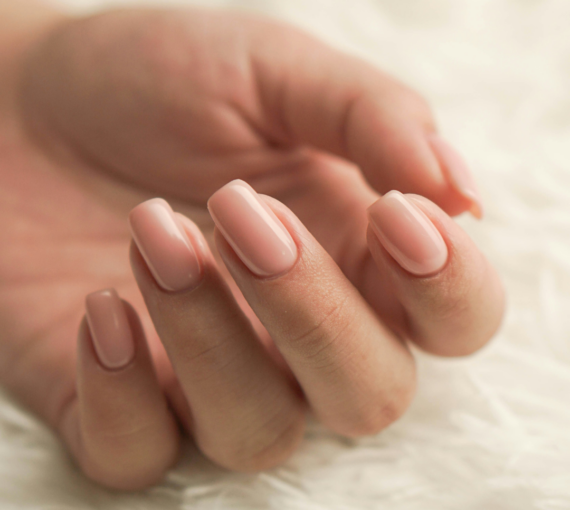
Choose non-toxic nail polish
Most nail polishes contain harmful chemicals like phthalates, formaldehyde and toluene. These are linked to environmental concerns and health issues, including cancer, reproductive disorders, asthma and allergies.
Gel polish is a longer-lasting alternative to regular polish. It’s cured using ultraviolet light and contains plasticizers, polymers and solvents — many derived from non-renewable petroleum. These chemicals contribute to air, water and ecosystem pollution during production and disposal.
More brands are supporting their eco-conscious consumers by offering eco-friendly nail polish.
Look for nail polishes labelled:
- “3-free,” “5-free,” “10-free,” or “21-free.” They don’t contain some of the most harmful chemicals commonly found in nail polish.
- Water-based. Free from harsh solvents. Release fewer fumes during application.
- Plant-based. Typically made of sugar cane, cassava and/or corn.
(Photo: Chelson Tamares via Unsplash)
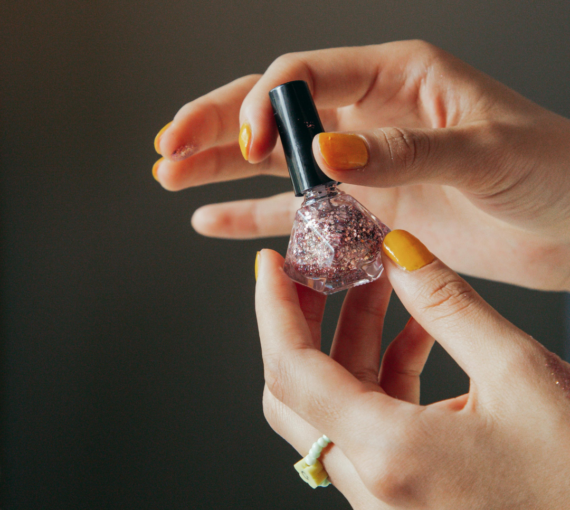
Avoid glitter
Glitter may be fun, but its impacts are longer lasting than the sparkle on your fingertips. Most are microplastics — smaller than five millimetres in diameter — and made of polyesters coated in aluminum or other reflective material. Microplastic pollution is a growing problem with serious environmental and human health impacts.
(Photo: Cottonbro Studi via Pexels)
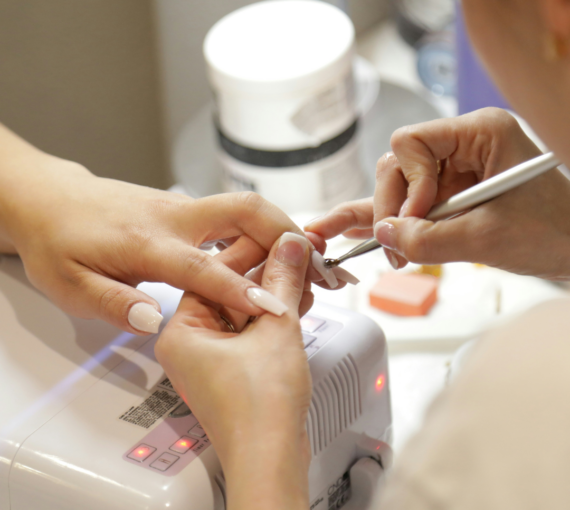
Give up acrylic and gel nails
The cultural practice of long, painted nails dates back thousands of years. They also hold deep cultural significance to Black communities, serving as powerful forms of self-expression and artistry. Historically, elaborate nails became a symbol of resilience, storytelling and individuality in times when mainstream beauty standards excluded or marginalized Black women.
Today, nail care and manicures have become a global phenomenon with trends and techniques influenced by cultures worldwide. But synthetic products like gel and acrylic have environmental and human health impacts.
Acrylic nails combine a liquid monomer and a powder polymer. Both of are petroleum-based and non-biodegradable.
Gel nails are made of a similar material and contain “oligomer” which makes the gel softer and more malleable. These require UV to harden.
Two common methods to remove acrylic and gel nails: acetone and/or a nail drill. Acetone is a powerful solvent capable of breaking down acrylic, gel and removing nail polish. Exposure can trigger allergic reactions, cause nose, throat lung and eye irritation and/or damage skin. A nail drill is a quicker removal method but with a steeper environmental cost. It creates a fine dust of microplastics that can enter and harm the environment and your body.
Press-on nails have risen in popularity as an affordable, accessible alternative. A bonus? They can be re-worn several times before being discarded. Most press-on nails are made of plastic. Eco-conscious brands offer plant-based and recycled alternatives.
(Photo: Giorgio Trovato via Unsplash)
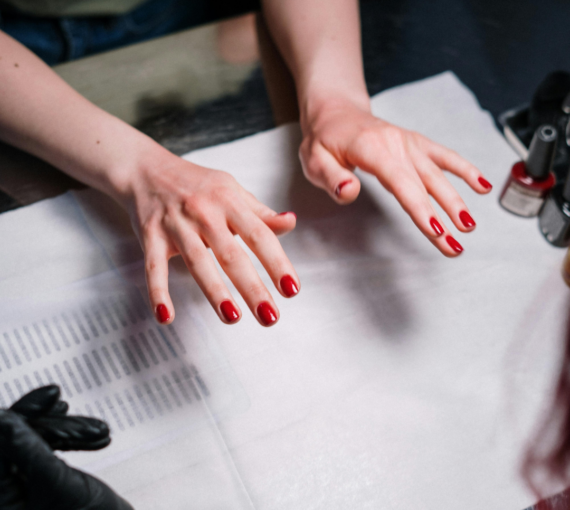
Research your salon
Choose salons that use non-toxic polishes and products. Many eco-conscious salons proudly advertise their commitment to environmentally friendly practices. These protect your long-term health, the manicurist’s and the environment.
Nail salon workers are disproportionately exposed to toxic chemicals. Long-term exposure has been associated with respiratory irritation, reproductive effects, damage to the nervous system, liver and kidney failure and cancer. Many salon workers in North America are women from marginalized communities. They often face systemic inequities such as low wages, lack of health insurance and inadequate workplace protections. Supporting salons that use safer products is one way to advocate for their wellbeing.
Ask your local salon if they’d be willing to consider adding an eco-friendly product line to their inventory.
(Photo: Cottonbro Studio via Pexels)

